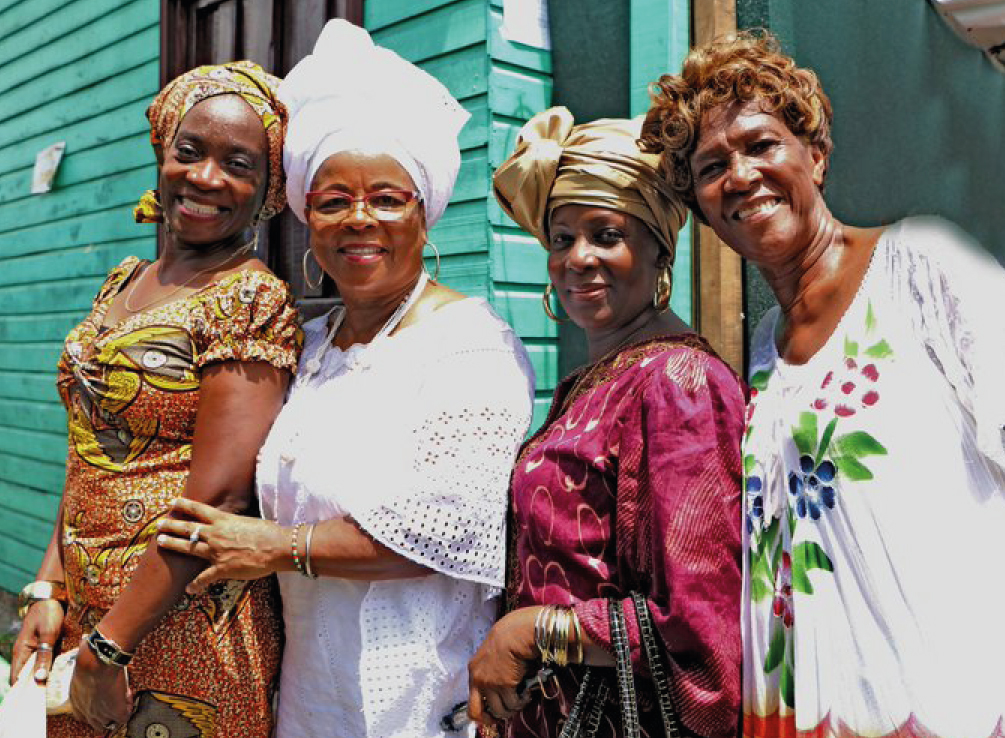Costa Rica is a small country in Central America known for its tradition of political stability. It has been acknowledged as a democratic nation, navigating exceptionally amid the concert of instability in other Latin American nations. In this context, the three branches of the State have undertaken a series of initiatives that mark progress in recognizing the rights of its Afro-descendant population.
Costa Rica is a small country in Central America known for its tradition of political stability. It has been acknowledged as a democratic nation, navigating exceptionally amid the concert of instability in other Latin American nations. In this context, the three branches of the State have undertaken a series of initiatives that mark progress in recognizing the rights of its Afro-descendant population.
During the 68th session on December 23, 2013, the United Nations General Assembly approved Resolution 68/237, which formalized the “Proclamation of the International Decade for Afro-descendants.” This decade began on January 1, 2015, and will conclude on December 31, 2024, under the theme: “Afro-descendants: Recognition, Justice, and Development”.
The goal of the proclamation is to celebrate the important contributions of Afro- descendants worldwide, promote social justice, and advocate for inclusive policies. In this way, the United Nations seeks to eliminate racism and intolerance, uphold human rights, and help create more prosperous communities in line with the Sustainable Development Goals.
In this context, on January 20, 2015, the government of Costa Rica issued Executive Decree 38835-RE concerning the 'Appointment of the Commissioner of the Presidency of the Republic for Afro-descendants and Special Representative of the State for Africa and Afro-descendant Affairs,' alongside Directive Nº 022-P on the 'International Decade for Afro-descendants.' The goal is to promote Afro-Costa Rican culture.
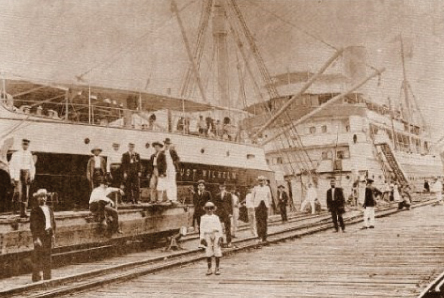
The steamship Príncipe Augusto at the Limón dock in the early 20th century. Photo: Sinabi
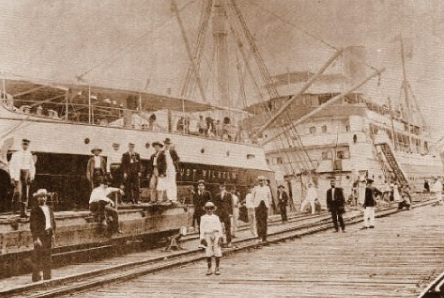
The steamship Príncipe Augusto at the Limón dock in the early 20th century. Photo: Sinabi
The origins of the Afro-descendant population in Costa Rica
During the colonial era, the majority of slaves in the country were primarily Africans who had been brought forcibly under the legal, if not moral, auspices of a system designed for the extraction of raw materials. As a corollary, the population's composition resulted from the blending of at least three human groups (Europeans, Indigenous, and Africans), laying the foundation for the republican process.
Despite the abolition of the slave system in 1824, Costa Rican national identity would begin to be founded on the erasure of Indigenous and African traits. Thus, the advent of independent life would categorize human groups in racial terms and through the caste system. Additionally, legal measures, such as the Law of Bases and Colonization of 1862 were instituted—a mechanism created to prevent settlements of African and Chinese peoples.
Alongside the Political Constitution of 1871, this law would establish the framework for Afro-Caribbean immigration during the 1870s, with an end to plan the workforce for the construction of the railway. At the time, this mode of transportation was conceived to connect 'the Atlantic' with the Central Valley of the country, facilitating the export of coffee —the main product and economic cornerstone of the new Republic— to European markets.

Oil painting titled '31 de agosto,' in honor of Black Person and Afro-Costa Rican Culture Day. Artwork. Photo: Honorio Cabraca
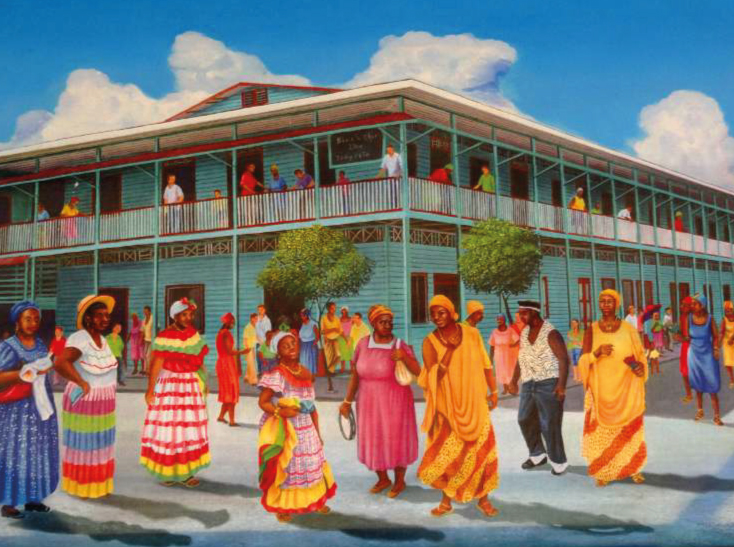
Oil painting titled '31 de agosto,' in honor of Black Person and Afro-Costa Rican Culture Day. Artwork. Photo: Honorio Cabraca
The progress of the Political Constitution of 1949
By means of the socio-labor integration of the Afro-Caribbean population, both banana plantations and the flourishing economy that accompanied, were developed. Although migration was initially considered temporary, the Afro-Caribbean population began to establish roots after several generations were born in Costa Rica. This process transpired in spite of the Political Constitution of 1871, which determined the nationality of a person born in the country based on the nationality of their parents.
Against this backdrop, various forms of awareness-building and social mobilization created the possibility of reversing this situation. The new Political Constitution of 1949 facilitated the opening up of Costa Rican nationality to women and the Afro-Costa Rican population, alongside other immigrant groups. Thus, Title III and Article 13 of this Carta Magna, established, from that moment onward, that individuals born in the country would be recognized as Costa Rican nationals.
Costa Rica transitioned from being “democratic, free, and independent” in the 1949 Constitution to, in the 2015 text, becoming a “democratic, free, independent, multi- ethnic, and pluricultural” Republic.
Costa Rica transitioned from being “democratic, free, and independent” in the 1949 Constitution to, in the 2015 text, becoming a “democratic, free, independent, multi- ethnic, and pluricultural” Republic.
As part of these advancements, it is also worth noting the transformation within the initial articles of each Political Constitution. Both are of paramount importance in the way they establish the character of the political-civil jurisdiction which relies on a set of key superior norms that define the legal framework of a State and encompass the organization of public powers and their competencies, which are the foundations of economic and social life and the duties and rights of the inhabitants of the nation.
As a legal framework, Article 1 of the Political Constitution of Costa Rica establishes the foundations upon which the nation is built. Costa Rica transitioned from being “democratic, free, and independent” in the 1949 Constitution to, in the 2015 text, becoming a “democratic, free, independent, multi-ethnic, and pluricultural” Republic. This change was initially proposed by then-deputy Joycelyn Sawyers Royal, who, in her visionary parliamentary work, saw her legislative project materialized 15 years later.
The solemn ceremony took place at the National Theater, a symbol of an era in which national identity was founded on “white homogeneity.” As an architectural and intangible manifestation of Costa Rican idiosyncrasy, the stage witnessed the special signing ceremony of the reform, held on Monday, August 24, 2015, leading up to August 31, the day of the Black Person and Afro-Costa Rican Culture, as part of the celebration of that date.
A long trajectory of conquered rights
A turning point in national history invoked by the Political Constitution of 1949 allows us to take a brief journey through the promulgation of legislation aimed at safeguarding the rights of the Afro-Costa Rican population beginning in the second half of the 20th century and into the 21st century.
– On November 22, 1960, the country issued Law Nº 2694 on the “Prohibition of all kinds of discrimination in labor matters.”
– On November 21, 1968, Law Nº 4230 was endorsed against “Discrimination (racial) in public and private spaces.”
– On October 8, 1980, Executive Decree Nº 11938-E declared August 31 as the “Day of the Black,” now known as the “Day of the Black Person and Afro-Costa Rican Culture,” following Law Nº 8938, 2011, of April 27, 2011.
– On August 23, 1994, Law No. 7426 changed the designation of October 12 from the 'Day of the Race' to the “Day of Cultures.”
– On October 22, 1997, Law Nº 7711 led to “Eliminating (racial) ethnic and cultural discrimination through education programs and mass media.”
– To inaugurate the new millennium, on December 2, 2000, Law Nº 8054 was enacted regarding “Ethnic and linguistic diversity.”
– The following year, on December 13, 2001, the Legislative Assembly declared Alex Curling Delisser the first Afro-Costa Rican deputy, as Meritorious of the Homeland through Agreement Nº 6041.
– On April 27, 2005, Executive Decree Nº 32338 created and regulated the “National Commission on Afro-Costa Rican Studies,” with the aim of promoting intercultural and multiethnic values through curriculum implementation nationwide.
– On November 26, 2013, Executive Decree Nº 38140-RE-PLAN enacted the “National Policy for a Society Free of Racism, Racial Discrimination, and Xenophobia 2014-2025 and its Action Plan.”
– On March 20, 2014, Law Nº 9223 established the “Recognition of the rights of the inhabitants of the South Caribbean” in the province of Limón.
– Finally, on September 14, 2014, Executive Decree Nº 38629 “Declares the site where the town of Black and bi-racial people was located in the city of Cartago, as a memory site of the presence of Afro-descendants.”
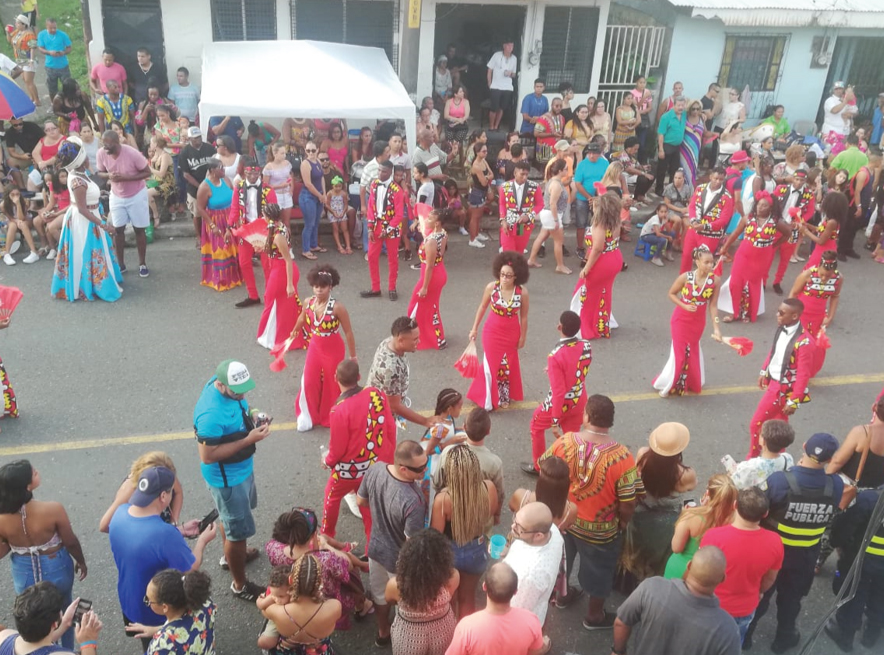
August 31 is celebrated as the Day of the Black Person and Afro-Costa Rican Culture. Grand Gala Parade of Limón (2019).
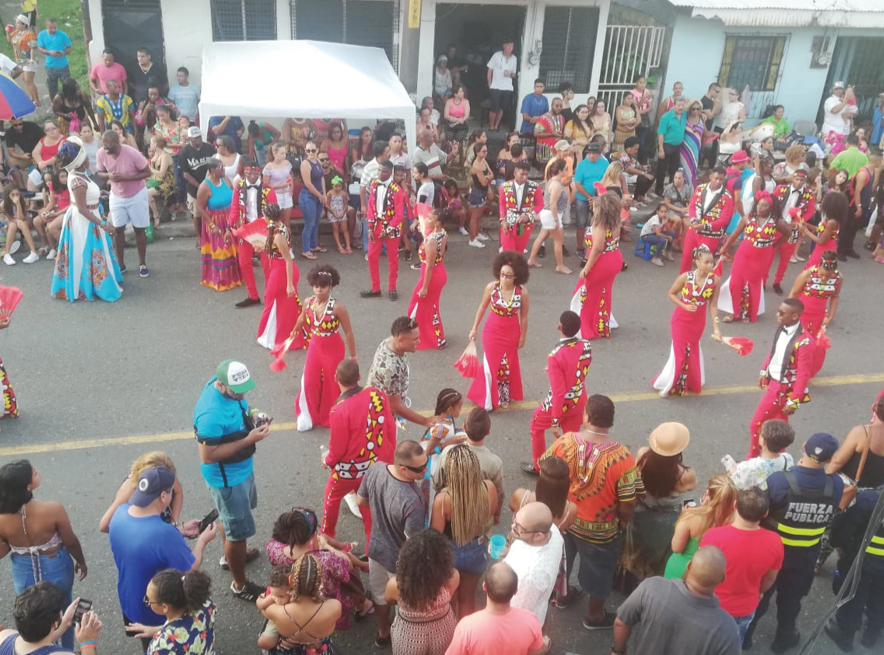
August 31 is celebrated as the Day of the Black Person and Afro-Costa Rican Culture. Grand Gala Parade of Limón (2019).
From an imagined community to an inclusive community
Within the Judicial Branch, the Full Court approved the proposal made by the Subcommittee for Access to Justice for Afro-descendant Persons in 2015: the “Institutional Policy for Access to Justice for Afro-descendant Persons and its Action Plan.” Years later, the Ministry of Health’s National Health Plan for Afro-descendant Persons 2018-2021 was implemented to contribute to the improvement of the quality of life of the Afro-Costa Rican population.
As part of the preliminary closing of this normative process, the promulgation of Law Nº 10001 on August 10, 2021, for “Affirmative Actions in Favor of Afro-descendant Persons” also stands out. It declares national interest in the development, implementation, and dissemination of affirmative actions for the benefit of individuals belonging to Afro- descendant ethnic groups. Furthermore, through Law Nº 10050 on October 25, 2021, “August is declared as the Historic Month of Afrodescendency in Costa Rica,” and August 31 of each year is designated as the official date to celebrate the Day of the Black Person and Afro-Costa Rican Culture.
Moreover, taking into account international considerations and driven by Costa Rica through the then Vice President of the Republic, Epsy Campbell Barr, the UN General Assembly adopted Resolution 75/170, establishing August 31 as the International Day of Afro-descendants on December 16, 2020.
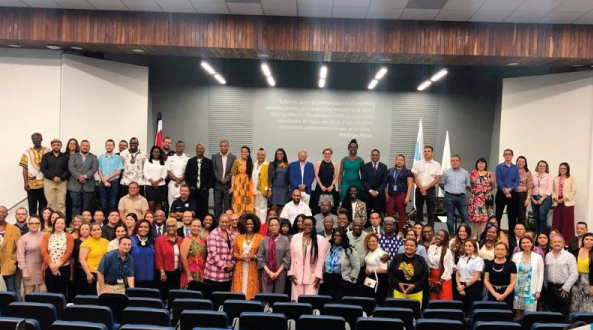
Training of the Working Group on Afrodescendants during the International Symposium “Acceleration of the Rights of Afro-descendant Populations: National, International Legislation, and Mechanisms for Implementation.” Photo: RINDHCA

Training of the Working Group on Afrodescendants during the International Symposium “Acceleration of the Rights of Afro-descendant Populations: National, International Legislation, and Mechanisms for Implementation.” Photo: RINDHCA
Present and Future of the Advancement of Rights
Among the activities carried out around these new provisions at the national and international levels, the Network of National Institutions for the Promotion of Human Rights in the Americas (RINDHCA), along with other national human rights institutions in the region, created the Working Group on Afrodescendants, coordinated by the Ombudsman's Office of the Republic of Costa Rica.
And as part of the commitment of the Working Group, the Ombudsman's Office organized the International Symposium “Acceleration of the Rights of Afro-descendant Populations: National, International Legislation, and Mechanisms for Implementation,” that was held on August 28 and 29, 2023 at the Auditorium of the Faculty of Law of the University of Costa Rica.
While the International Decade has just over a year left to conclude, and despite recent outbreaks of racism during some national football matches, Costa Rica and the Afro-Costa Rican population remain vigilant. Meanwhile, gradual advances in human rights are observed, and undoubtedly, there is still work to be done.
